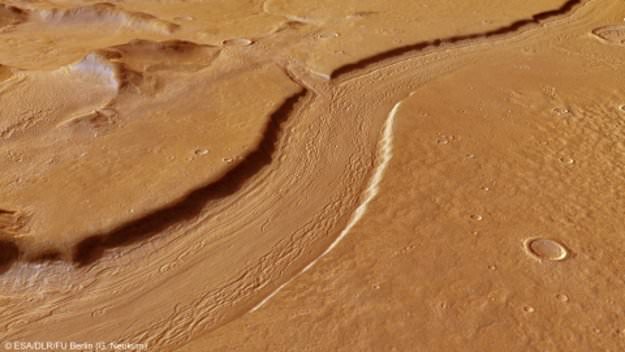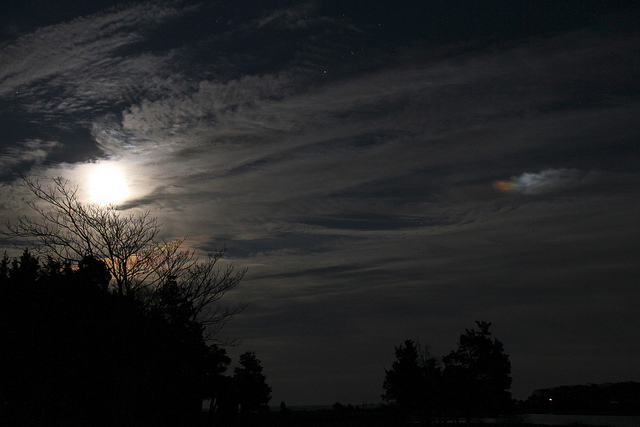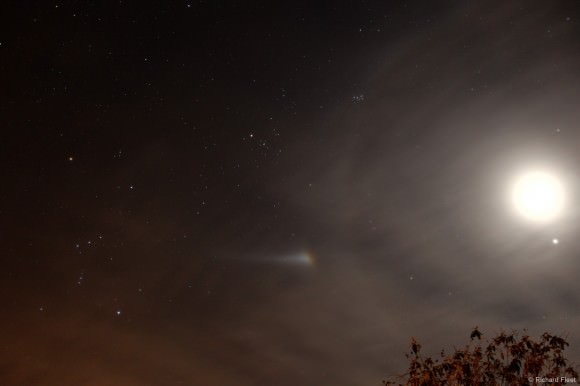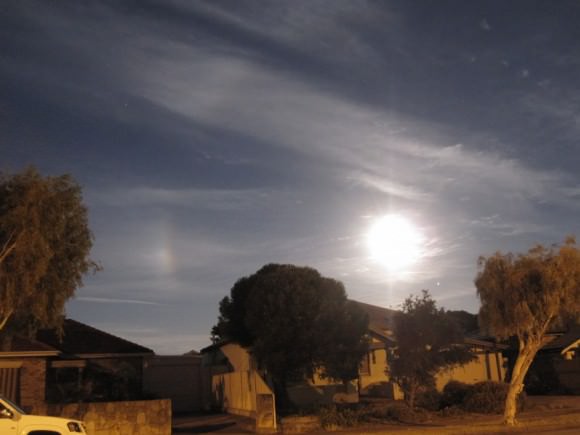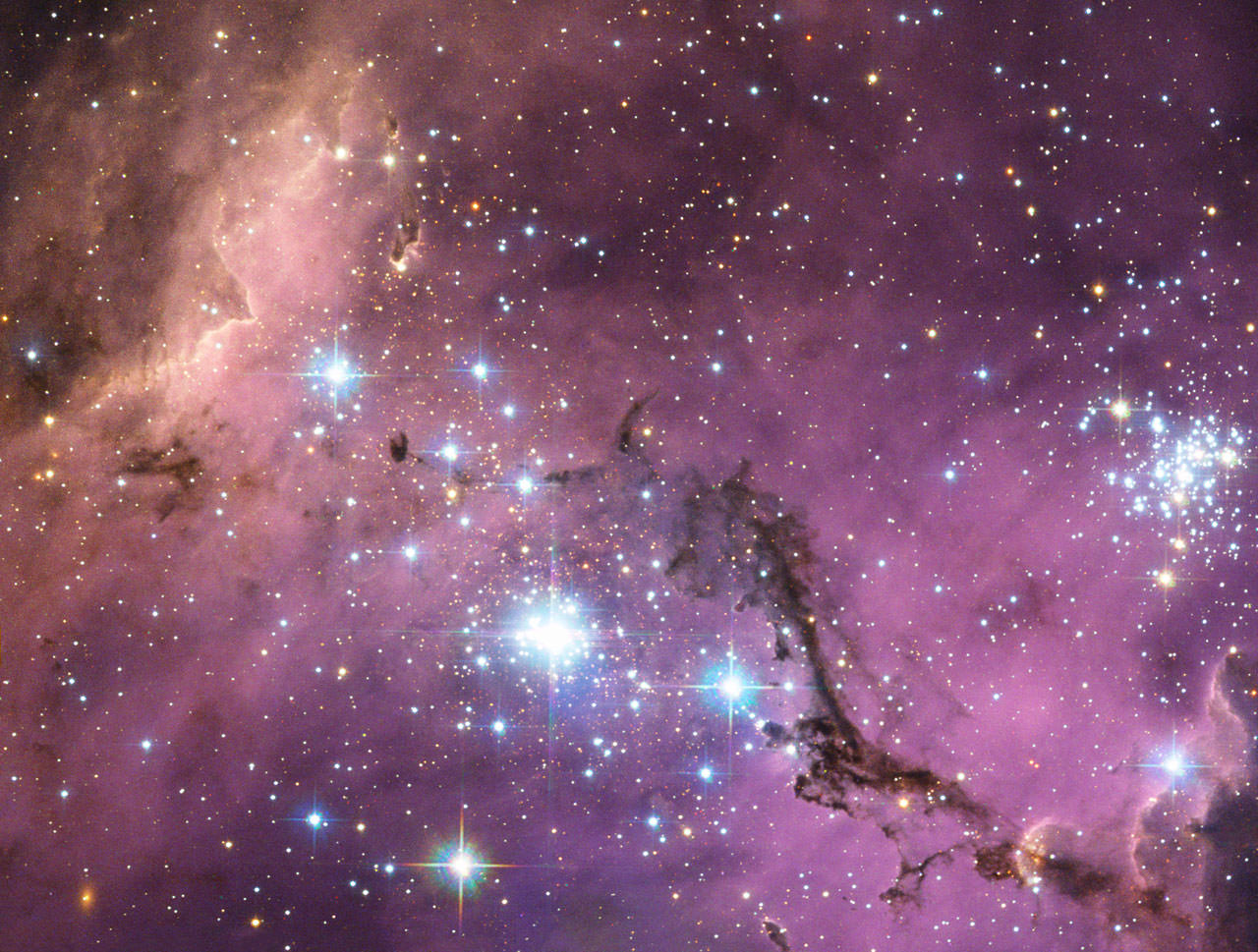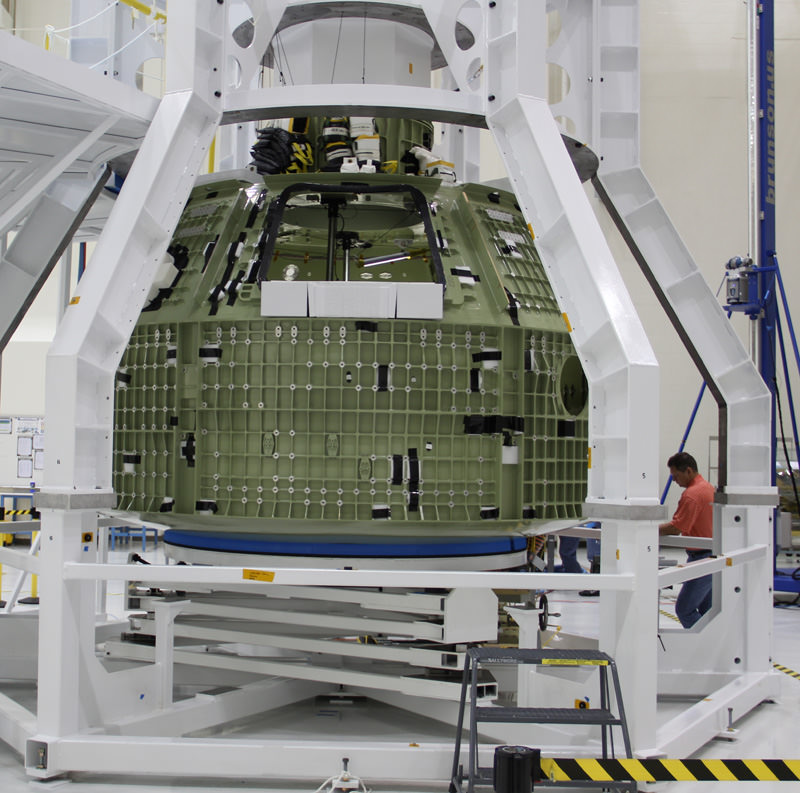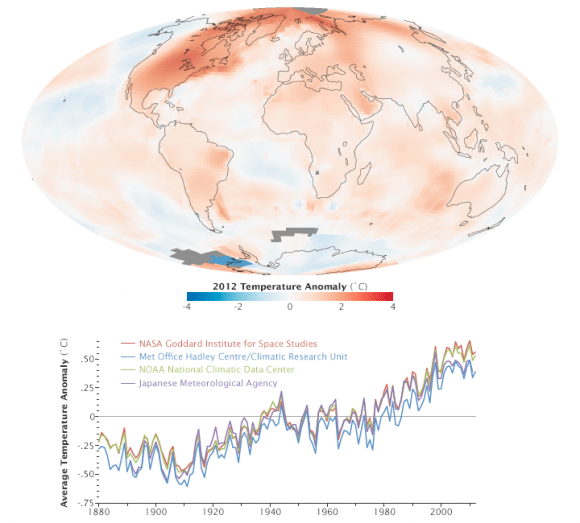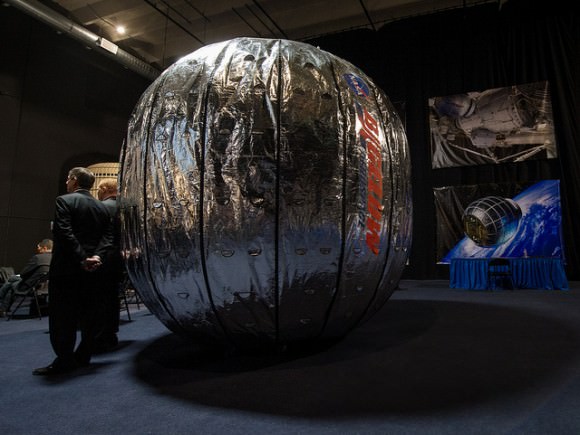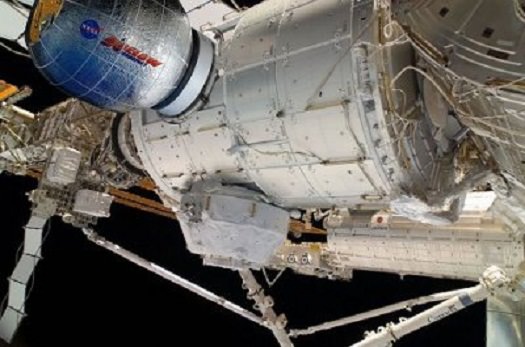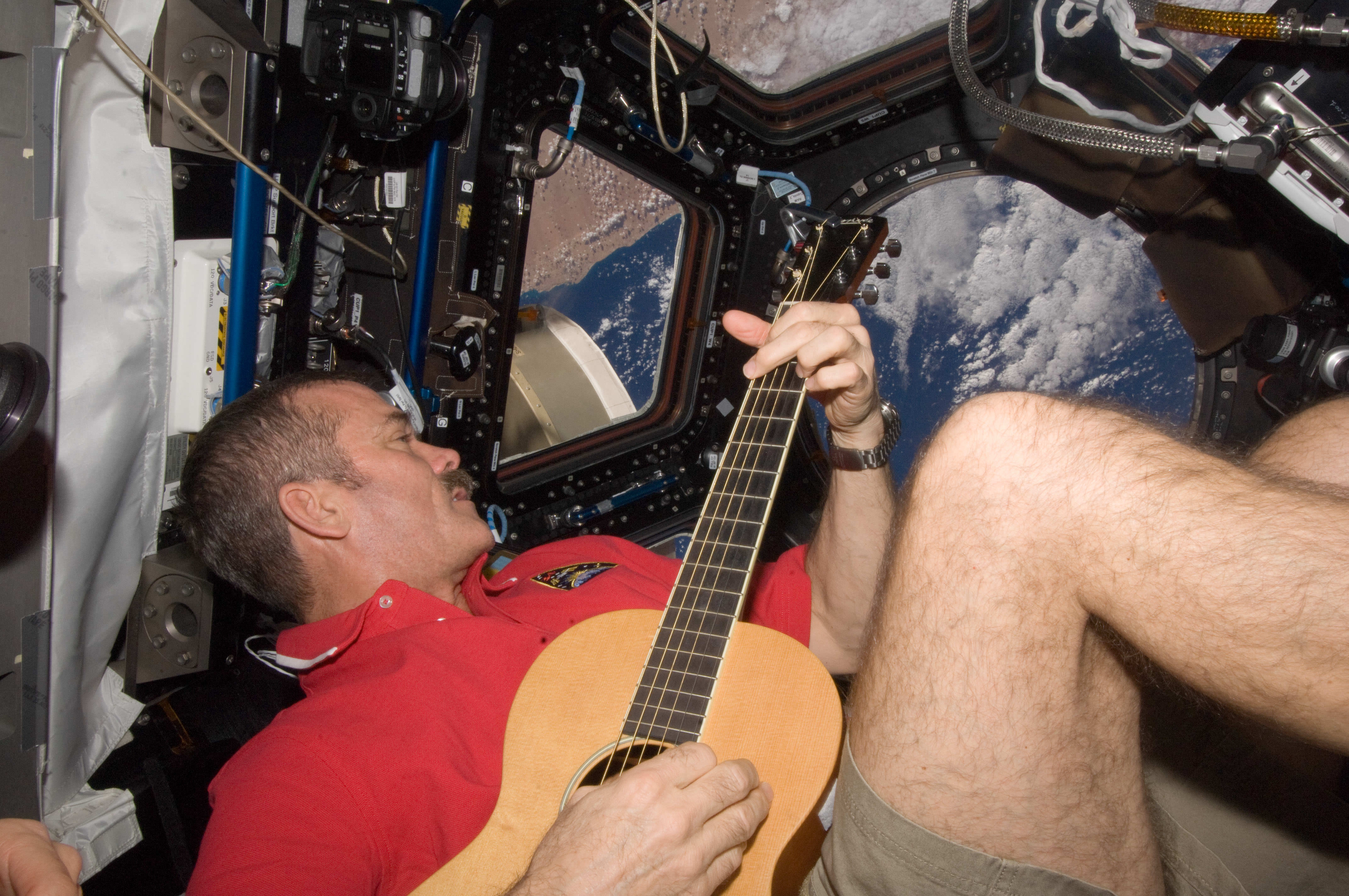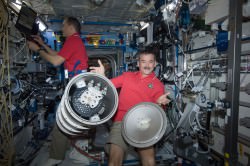The Mars Express has long been taking pictures of what appears to be an ancient riverbed on Mars. In fact, Reull Vallis was one of the first objects on the Red Planet that Mars Express ever imaged back in 2004 when the spacecraft arrived in orbit. The latest images show the sinuous river-like feature that stretches for nearly 1,500 km across the Martian landscape. This winding depression is 6-10 km wide, and its depth varies from 100-600 meters. In comparison, the Amazon River on Earth is about 6,500 km long and 11 km wide in places.
So, is this really an ancient river?

Planetary scientists seem to be fairly unanimous that, from orbit, this appears to be a riverbed. There is a system of tributaries and side channels that all appear to flow into the huge Hellas Basin.
There are various theories as to how it may have formed, however. Some scientists say that this feature may have been created quickly in a sudden deluge or runoff event, as the entire system look like stream beds cut by sudden runoff in desert regions on the Earth.
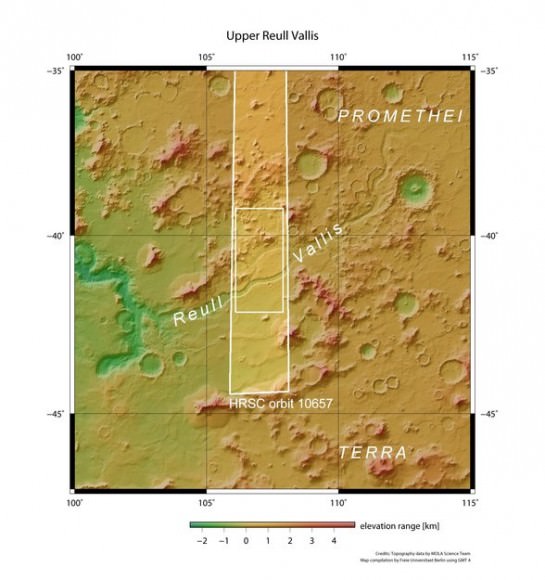
Others suggest this system consists of parts that were formed during several phases rather than being a single continuous channel, and likely had independent formation phases and different sources of water. For example, numerous crescent-shaped features could be older craters distorted by water flow.
There is also evidence of deposits of volatiles in the walls of the channel that could be ice.
In the wider context image above, the tributary intersecting the main channel appears to be part of a forking of the main valley into two distinct branches further upstream before merging back into a single main valley.
The right (northern) part of the main image is dominated by the Promethei Terra Highlands with their high and soft-rounded mountains shown in these images, rising around 2500 m above the surrounding flat plains.
The perspective view below shows one of these mountains with nearby sediment-filled impact craters:
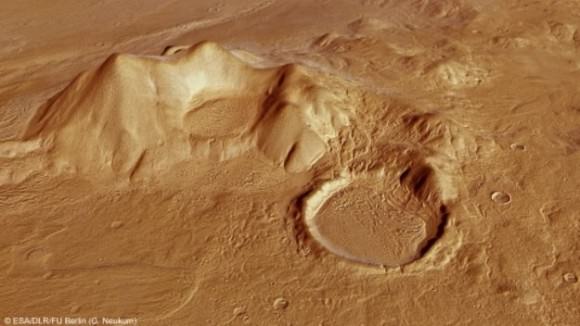 >
>What about lava flow? Could this be a giant lava flow or tube that has collapsed? Astronomers say that lava and glacial erosion would have produced very different channels.
And so it appears Reull Vallis provides evidence of past water on Mars. And if so, it means that the planet’s climate has changed dramatically since these features were formed between 3.5 billion and 1.8 billion years ago.
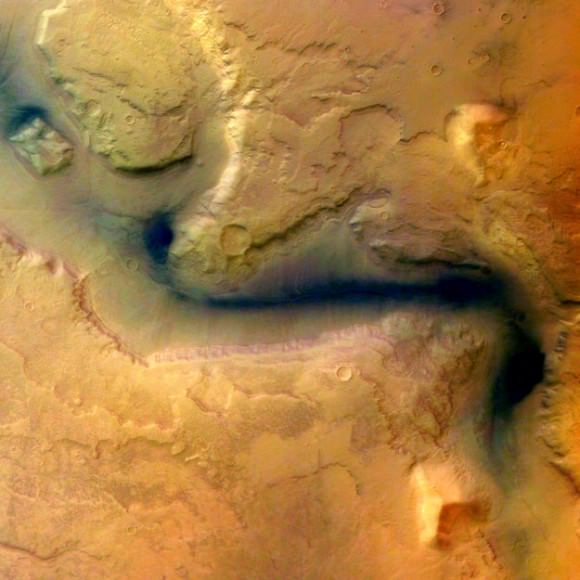
Sources: ESA Science paper from 1997 by Scott Mest and David Crown, University of Pittsburgh, Paper by Kostama, et al, 2007, ESA 2004.

